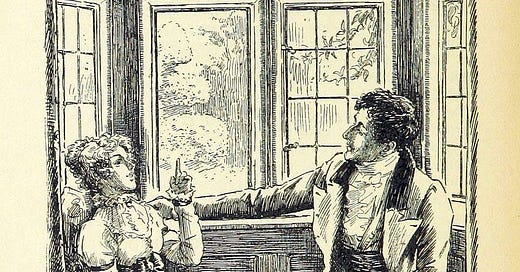The most successful classes I taught during my 20-plus years in the classroom centered around a question to be answered—preferably a deep, thoughtful question with many possible answers, so students had the opportunity to explore and think and research and come to some conclusion that didn’t feel final. My favorite was a class called “The Power of Story” because in this class, I was looking for an answer, too.
The question was deceptively simple: Why do we tell stories?
Lots of people have attempted to answer this question, some of them in ways that I found satisfying. But no one has really nailed it down because there are lots of different kinds of stories—fairy tales, myths, legends, family stories, visual stories (as in movies and paintings and video games), propaganda, advertising, and so on—and lots of conditions under which they’re told.
Nearly every human culture since the beginning of time is known to have told stories of one kind or another. The universality of storytelling suggests that they serve a purpose beyond the purported one: entertainment. “Stories are just for fun” was usually the first statement my students leapt to. We were able to agree that, yes, that’s true, but they must be doing something more. And off we went.
I read lots of interesting research and some great student papers during the time I taught “The Power of Story,” and eventually, semester by semester, I worked out several answers for myself. I never shared them with my students because I didn’t want to influence their own process of thinking about our question. But I’ll share some thoughts with you, because presumably you’re not trying to write an essay for class!
One criticism of realistic fiction that always bothered me was that it fails to tell us about the “real” experience of life because storytelling is an artificial construction. (For those readers who know their literary terms, I’m using the term “realistic” here in a general sense, not as a reference to the specific genre of 19th-century “realism.”) In real life, there’s no rising tension reaching a climax followed by a resolution. It just keeps going on like an unpredictable rollercoaster ride, with higher highs and lower lows and sharper turns for some than for others, and at the end, you die. Even if an author tries to replicate this episodic movement, ultimately the attempt is artificial. So, stories fail to be realistic at all (so the criticism goes).
But one thing I came to understand by asking why we tell stories is that the majority of realistic fiction isn’t meant to simulate life. It’s meant to take the details of real life in a particular place at a particular time and, instead, try to put them together into something that helps us make sense of our actual chaotic, disorganized experience. A realistic novel is, beyond a form of entertainment, an attempt to organize a fictional life such that it has some meaning—a theme, a purpose, a moral, a resolution. If we’re lucky and a book really speaks to us, it can help us organize our understanding of our own lives, too.
I’ll give you a popular example: Pride and Prejudice. It’s an early version of what is now a familiar rom com plot: boy meets girl, they detest one another; despite their best intentions they fall in love, but circumstances contrive to keep them apart until the very end, when they finally manage to come together and live happily ever after. Pride and Prejudice is realistic in the sense that it’s set in a particular historic time and place in the past (not the future), the characters are much like real people who could have lived in that time and place, there’s no magic or speculative science, no portals to a different world, no talking animals. But Pride and Prejudice isn’t exactly realistic in the sense that its movement mimics real life. Sure, all of the things that happen in the plot have happened to actual people. But the plot is (brilliantly) constructed to move at a satisfying pace, with turns of fortune at just the right moments to surprise and delight the reader, building tension to the point at which we despair of things ever working out, until—they do!
Life doesn’t work that way, but that’s entirely beside the point. We don’t read Pride and Prejudice for a roadmap of how life actually works. We read it in part, I would argue, in order to experience the real events of life in a more organized, satisfying package. The disparate pieces of our own lives might not fit together in a way that makes sense to us, but what a relief to see how, imaginatively, they could.
This is true not just for novels like Pride and Prejudice that have happy endings. It’s true, too, for realistic novels with more “realistic” outcomes. In order to be readable, the vast majority of them still offer an ordered plot with conflict and resolution and some shred of redemption at the end.
I think a lot of dedicated readers of fiction probably understand this subconsciously, even if they never articulate it—that stories are giving them something deeper than entertainment, and that “something” has to do with rearranging their own experiences into a neater, simpler design. You wouldn’t think we’d need to keep on reading, year after year, in order to get that. But organizing and understanding a life turns out to be an extremely complicated, ongoing endeavor.
Some books, of course, will do a better job at this than others, and those books will be different for every person. Think about the realistic novels you love most. It’s worth asking another big question: How might those particular novels have helped you put the pieces of your own experience together?





Kathy, I so enjoy your posts. You are still missed. 💕